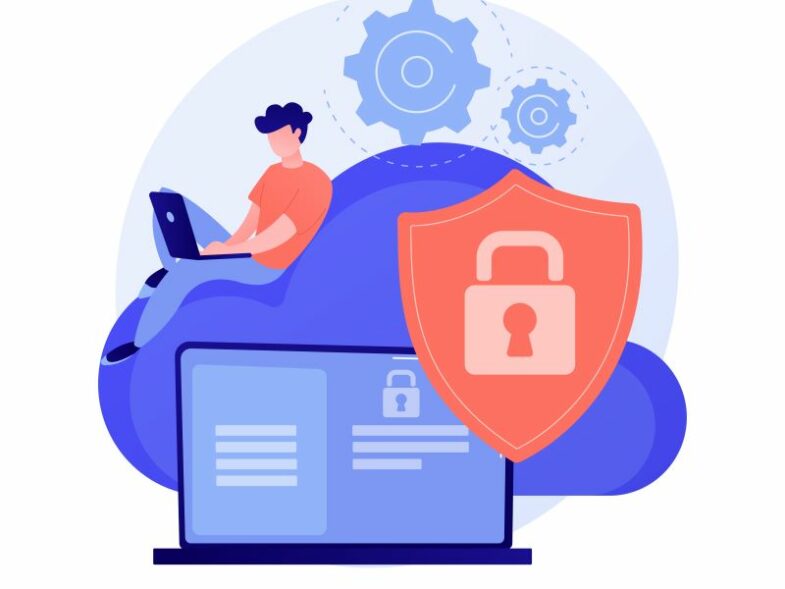Security risks are getting more sophisticated and common in the ever-complicated digital terrain of today. From cybercrime to hackers to even internal threats, companies of all kinds are under continual attack from many angles. Maintaining one step ahead and guaranteeing maximum security depends on a strong threat intelligence management system being put in use. This paper offers a thorough manual on proper threat intelligence management applications.
What Is Threat Intelligence Management?
Threat intelligence management is the gathering, evaluating, and acting upon the process of information on possible hazards. This data can enable companies to better grasp the nature of cyber risks, their operations, and what steps should be taken to guard systems and private information. Strong threat intelligence management helps companies to identify and react to possible hazards before they become actual, therefore lowering the possibility of a successful assault.
Why Is Threat Intelligence Management Important?
Organizations run several security risks without a complete threat intelligence management system. Significant financial losses, reputation harm, and client trust loss can all follow from cyberattacks, data breaches, and insider threats. By providing practical insights that enhance decision-making and simplify security protocols, threat intelligence management helps to reduce these risks.
Organizations that keep an eye on possible hazards can preventative actions such as vulnerability patching, security protocol modification, and countermeasures deployment before a threat surfaces.
How to Apply Threat Intelligence Management for Optimal Security
Effective use of threat intelligence management calls for a methodical approach. The main actions required in building a threat intelligence management system with the highest security capacity are listed below.
1. Understand Your Security Needs
Evaluating your company’s particular security requirements is crucial before delving into the technical details of threat intelligence management. The size, sector, and kind of data your company processes will all affect these needs. A financial organization can, for instance, have different risks than a healthcare provider.
Spend some time determining important assets such as intellectual property, customer data, and proprietary systems and learning how they can be vulnerable to both internal and outside attacks. This assessment will offer a clear road map for using threat intelligence management to fit the particular security requirements of your company.
2. Set Clear Goals for Threat Intelligence Management
Once you understand your organization’s security needs, it’s time to set clear goals. Define the outcomes you want to achieve with your threat intelligence management system. This could include:
- Improving incident response time
- Reducing the risk of data breaches
- Gaining insights into emerging threats
- Enhancing vulnerability management
Setting measurable goals will ensure your threat intelligence management efforts are aligned with your organization’s broader security strategy and help you assess the effectiveness of the system over time.
3. Choose the Right Threat Intelligence Sources
Choosing the appropriate sources of threat intelligence comes next as crucial for applying threat intelligence management. From open-source intelligence (OSINT), commercial suppliers, government organizations, and industry associations, threat intelligence can originate from many sources. Selecting trustworthy and credible sources is quite vital.
Open-Source Intelligence (OSINT): OSINT stands for publicly accessible data including news, blogs, and forums. Although it is a reasonably affordable source of intelligence, occasionally it lacks the specificity required for quick response.
Commercial Providers: For a cost, these businesses provide thorough, practical threat intelligence. Usually offering more targeted and dependable information fit for your company’s requirements, they can be tailored.
Government and Industry Groups: To help guard against shared threats, governments and certain sectors may provide threat intelligence to businesses. Joining such organizations can offer early warnings and insightful analysis.
Combining these sources can help you create a well-balanced portfolio of threat intelligence covering a wide spectrum of possible hazards.
4. Integrate Threat Intelligence into Existing Security Systems
Management of threat intelligence cannot operate in a vacuum. It has to be included in your company’s current security measures if it is to be most successful. This covers firewalls, intrusion detection systems (IDS), security information and event management (SIEM) technologies, and endpoint security solutions.
Including threat intelligence in these systems lets them respond to hazards in real-time. Once a threat is found, the system can act automatically, perhaps isolating compromised devices from the network or blocking rogue IP addresses. This flawless integration helps lower the response times and lessen risks.
5. Analyze and Correlate Threat Data
Threat intelligence must be gathered and then examined to offer practical insights. Without careful study, raw threat data—including IP addresses, malware signatures, and attack patterns—can be overwhelming and challenging to understand. Using advanced analytics and machine learning, one can help link several data points, spot trends, and find anomalies.
Examining the relationship between several data breaches and seeing an attack path, for instance, might enable your company to act early to stop the next ones. Making wise decisions and raising your general security posture depends on this analysis process.
6. Prioritize and Respond to Threats
Not every threat is made equal, and not every one calls for a quick response. Having a strong threat intelligence management system in place helps you to rank the risks according to seriousness and possible influence on your company. This helps your security team to concentrate on the most important problems first, therefore guaranteeing effective use of resources.
For instance, a zero-day vulnerability in a widely used program should come first over a low-level phishing effort. Your security staff will be able to react faster and more precisely with a clear threat prioritizing system.
7. Continuous Monitoring and Improvement
Threats change, therefore your threat intelligence management approach should change as well. To keep ahead of fresh hazards, one must be constantly monitoring. Regularly updating threat intelligence feeds, changing security protocols, and doing frequent audits will help your company keep on top of new risks and guarantee that your defenses hold strength.
Review and improve your threat intelligence management techniques also regularly. revisions in the danger scene and lessons gained from past events might guide revisions to your security plan.
8. Collaboration and Information Sharing
Management of threat intelligence is a team endeavor as much as a technical process. Using information sharing with other companies and trade associations, you may strengthen your reaction capacity and better grasp of risks. To trade threat intelligence, think about forming alliances with reliable colleagues, suppliers, and cybersecurity communities.
Working together will enable your company to identify industry-specific or worldwide hazards faster and act proactively to prevent attacks before they become more serious.
Best Practices in Management of Threat Intelligence
- Where feasible, automate: Faster reactions to threats and lessening of security professionals’ workload made possible by automation help Automating threat detection, analysis, and response procedures helps companies to lower human error and increase productivity.
- Create an incident response strategy: Minimizing the effects of cyberattacks depends on a strong incident response strategy. Make sure your strategy calls for particular roles, duties, and actions to follow should a security breach arise.
- Keep learning: Threats change quickly, hence your security professionals need constant education and training. Share with them often the newest attack techniques, tools, and best practices for properly leveraging threat intelligence.
- Guarantee Data Quality: Crucially, the threat intelligence you compile is relevant and accurate. Pay close attention to compiling top-notch, useful information immediately addressing the security requirements of your company.
- Use platforms for threat intelligence: Threat intelligence platforms (TIP) can centralize and simplify threat data handling. It lets security teams prioritize risks, monitor and evaluate threats, and automatically run processes for maximum effectiveness.
Conclusion
In the digital environment of today, your company’s security depends on using threat intelligence management. Following the above-described procedures will enable you to create a strong threat intelligence system that supports early identification of possible hazards, keeping ahead of developing ones, and efficient incident response. Give actionable data top priority; include intelligence into your current systems; and keep refining your strategy to be safe from the always shifting cyberspace. This will maximize security and shield your company from the expanding risk of cybercrime.









